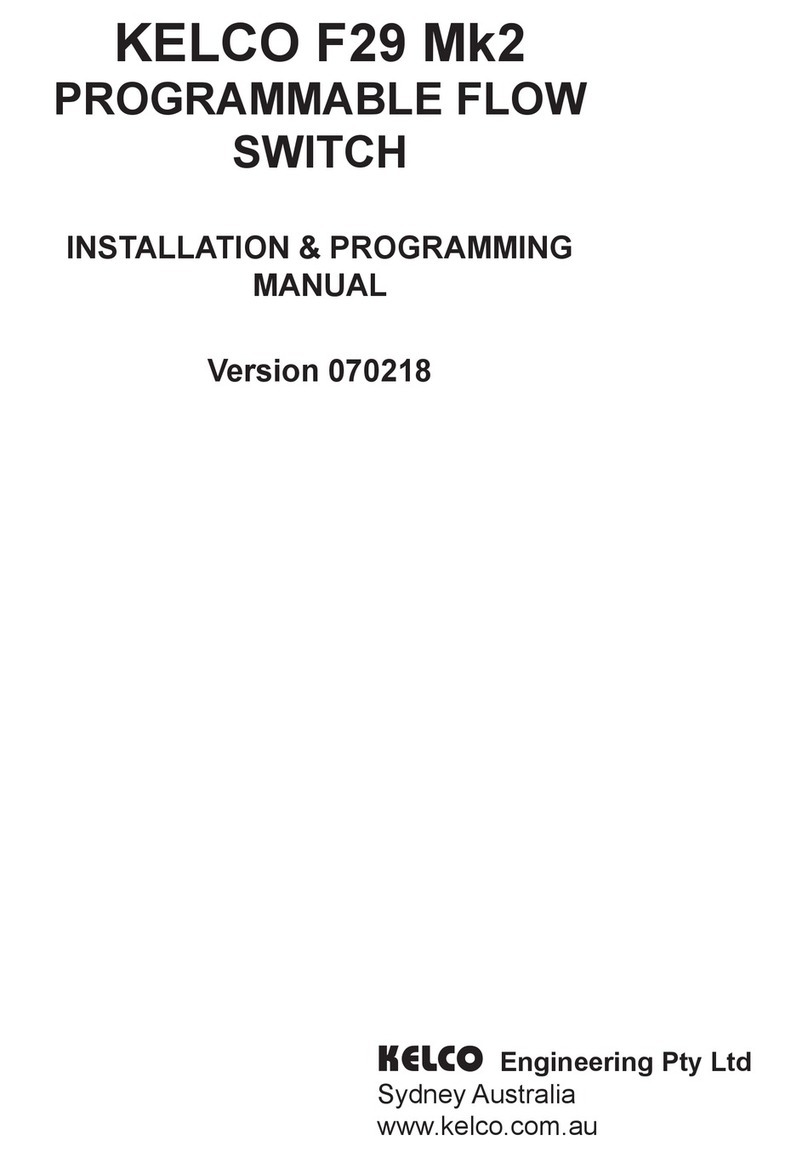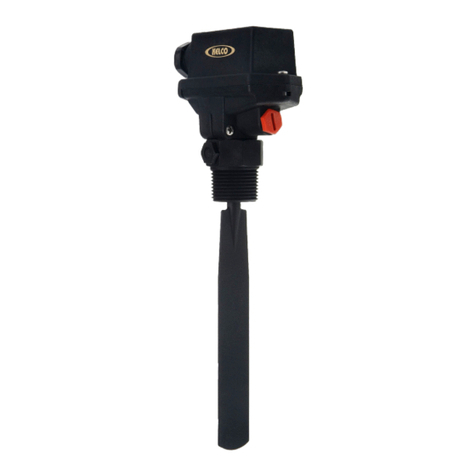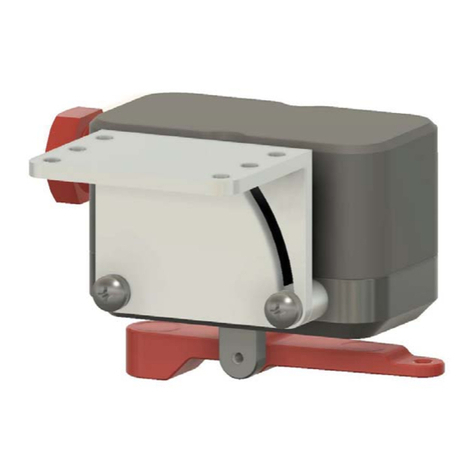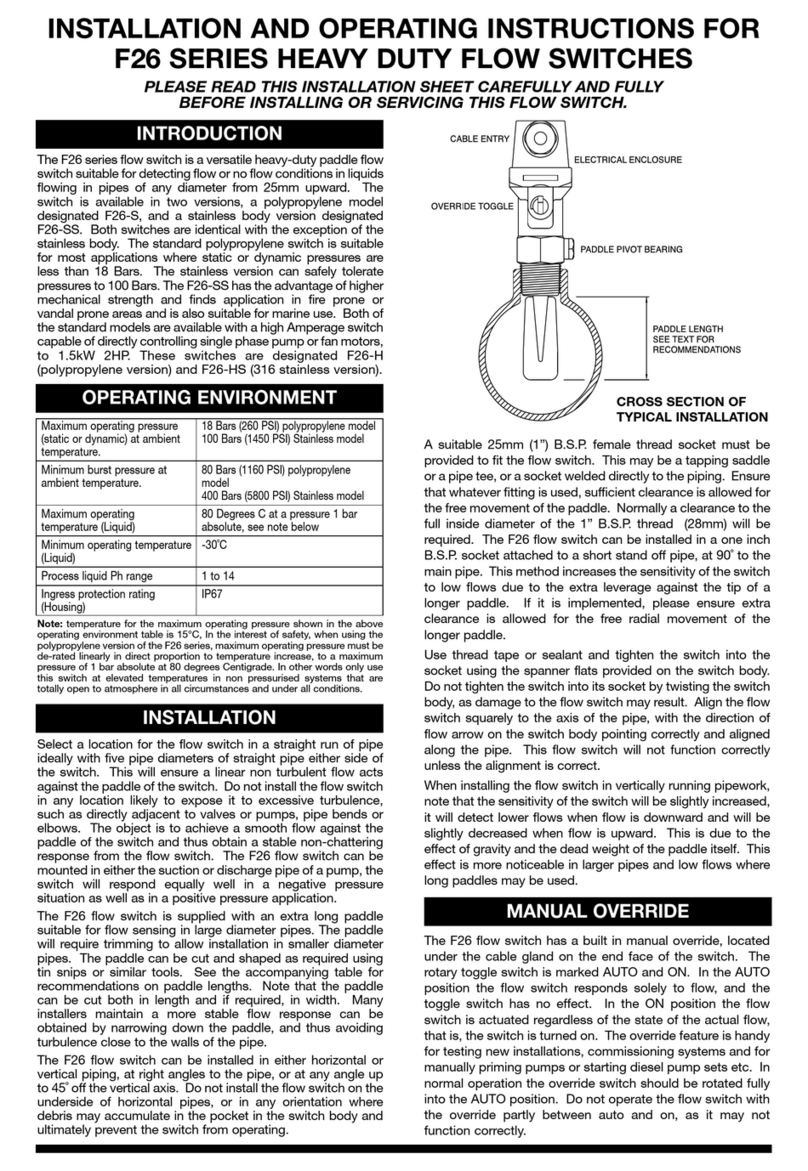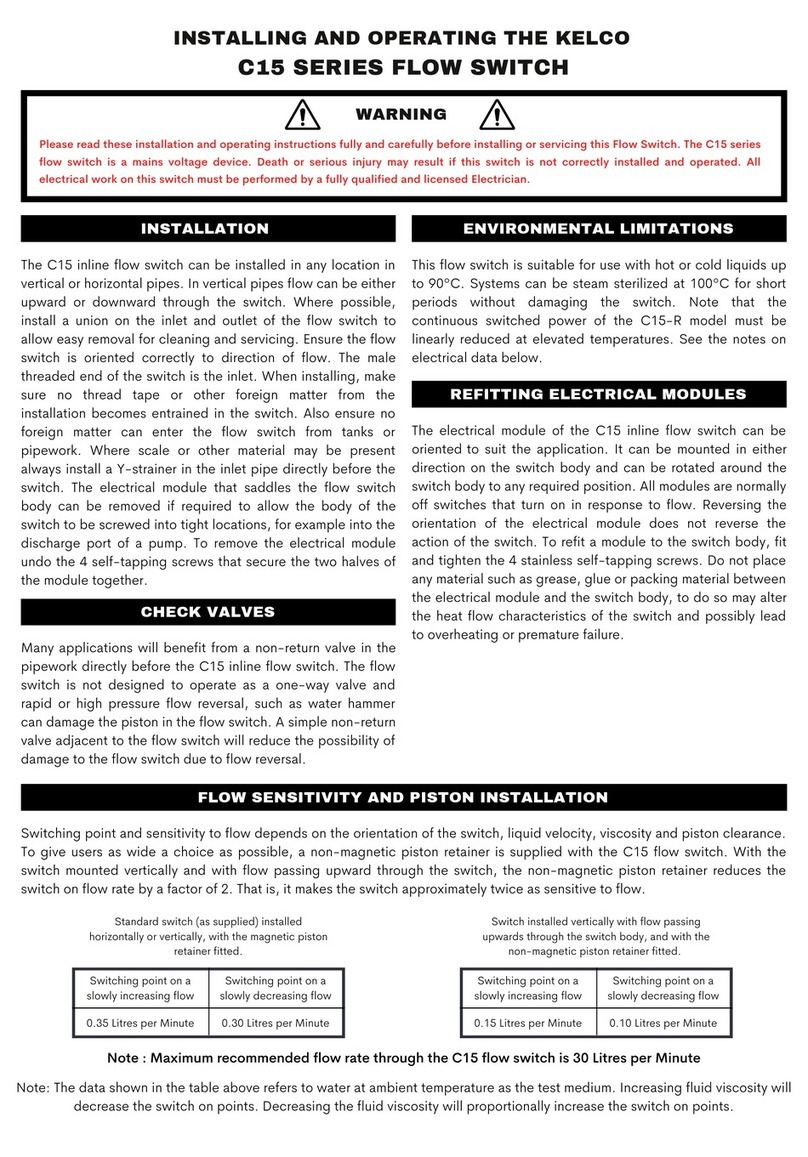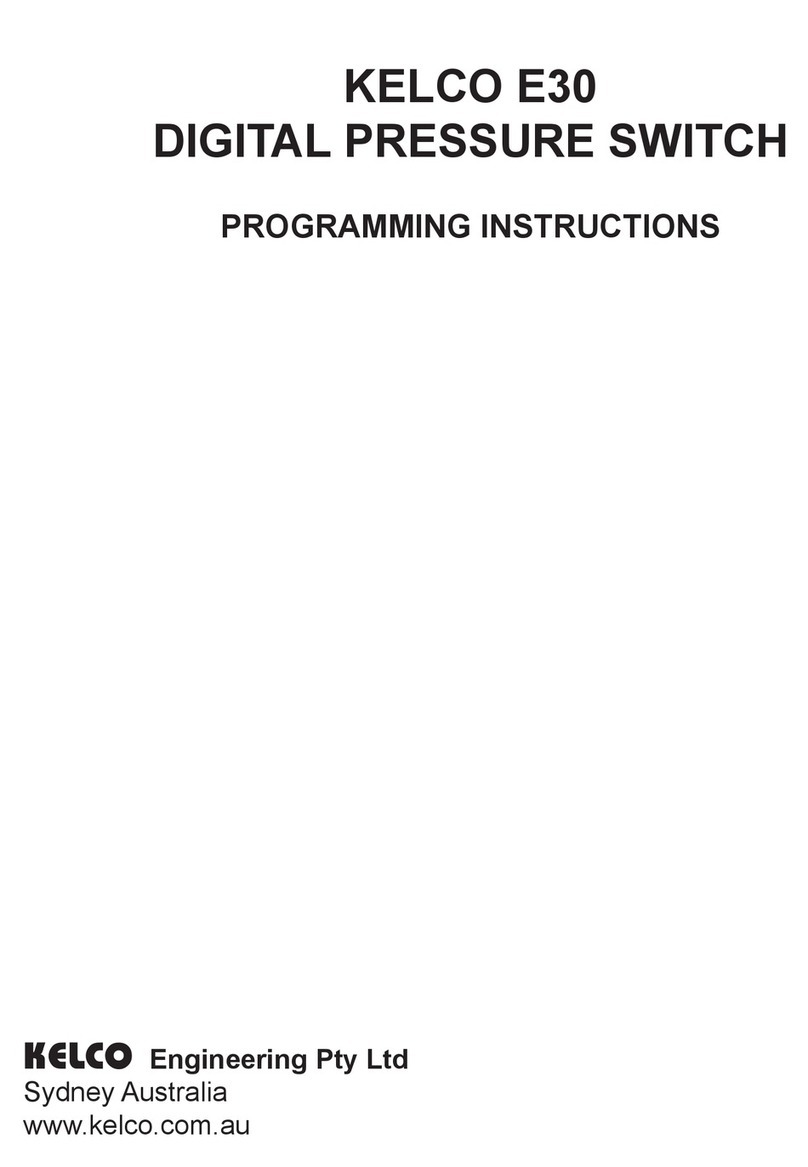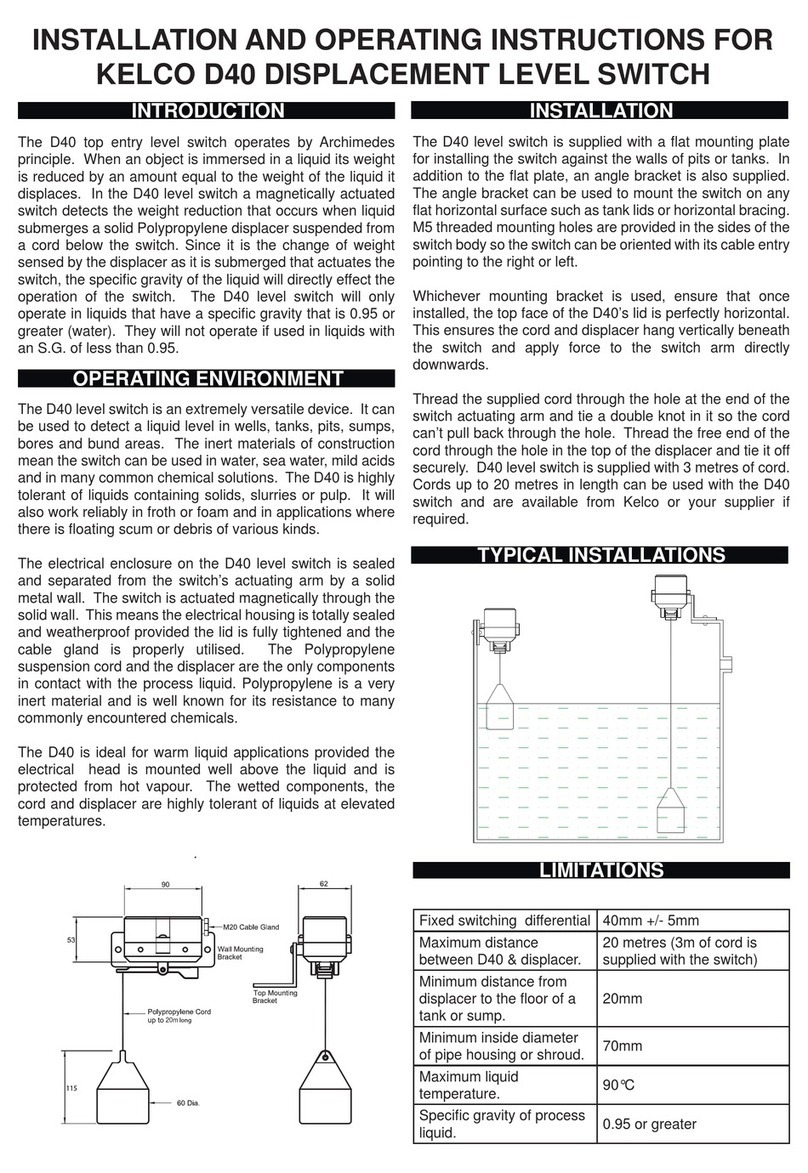
5
4) Never expose the E30 to static or dynamic pressures greater than
20 Bars, 290 psi.
5) DonotinstalltheE30 in asectionofpipethat is subject tovibration.
Vibration will cause premature failure of the electronic components
within the controller.
6) Never install the E30 in the suction pipe of the pump or in any
location where it may be subject to partial vacuum conditions.
LOCATION
Install the E30 in a location that is sheltered from direct exposure to the weather.
The E30 is weatherproof and is supplied with a protective cover. However, to
ensure a long reliable life from the E30 we recommend it be protected from direct
exposure to the weather wherever possible. Intense sun light will eventually
cause degradation of the pressure switch’s enclosure and in extreme cases may
cause overheating of the electronics inside the E30. It is therefore advisable to
protect the E30 from the weather whenever possible.
The E30 can be wall mounted using the wall mounting bracket kit supplied with
each unit or it can be installed directly onto pipework. The location of the tapping
point is important. The E30 responds to positive pressures only. It should never
be installed in pipework that is subject to partial vacuum (negative pressures). Do
not install the E30 in the suction pipework of a pump. The tapping point should be
in a location that is away from valves, elbows and concentric reducers. The E30
can be installed in either horizontal or vertical pipework. Flow direction has no
impact on the performance of the pressure switch. Install the E30’s tapping point
in a section of pipe that typies the pipework in the general system. If water
hammer is a potential issue in the system’s pipework, wall mount the E30 and run
a length of small diameter capillary tube between the tapping point and the E30.
Coil the capillary tube so the tube acts as a snubber and absorbs the pressure
shock from the water hammer.
The E30 will read the line pressure at its tapping point. Consideration should be
given to the layout of the pipework and its eect on the reading accuracy. If the
system is subject to dynamic pressure, that is, pressure generated as a function
of uid movement within the pipe system, then the location of the tapping point
will eect the E30’s ability to read the pressure in a sensible manner. If the pipe
system is only subject to static pressure, that is, pressure that may uctuate but
is from essentially stationary liquid within the system, then the tapping point is
unimportant as pressure within such a closed system will be uniform at all points.
